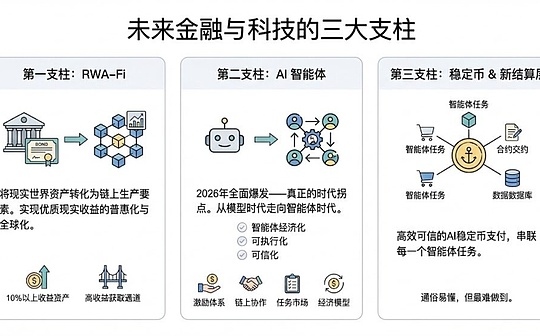
Translation: MetaCat
summary
Since the original TON white paper [1] was written in 2017, many new blockchain projects have emerged, such as Solana and Ethereum 2.0.In this article, we compare TON with some of the more representative blockchain projects.
1. Comparative Form
Formal comparison of the classification of blockchain projects according to sections 2.8 and 2.9 of TON’s original white paper
1.1 Comparison Guide
We classify blockchain projects based on the following criteria, which are explained in more detail in Section 2.8 of TON White Paper [1]:
-
Single-blockchain/multi-blockchain project
-
Consensus algorithm: PoW (Proof-of-stake)) / PoS (proof-of-stake)
-
For PoS projects, accurate consensus algorithms (such as dPOS or BFT)
-
For multi-blockchain projects that support arbitrary (Turing-complete) smart contracts, issues that we must further consider:
1> Types and rules of member blockchains: homogeneous, heterogeneous, mixed
2>The existence of the main chain
3> Native support for sharding, static and dynamic sharding
4> Interaction between blockchains: loose coupling/tight coupling
In addition, simplified classification of blockchain projects is introduced in 2.8.15 of TON White Paper [1], and a table containing the basic properties of the most popular blockchain projects is given at the beginning of Section 2.9.
2. Solana
2.1 Solana Overview
Solana [2] was a somewhat unusual project in the 2020s: It’s aA single blockchain project optimized for very fast execution of specialized transactions.In this regard, it is similar to the BitShares project [9] (developed in 2013-2014), the predecessor of EOS [8] (developed in 2016-2018),But instead of dPOS, the PBFT [10] variant called Tower Consensus [3].Solana claims to generate a block per second, even faster; however, this comes at a cost becauseThe next block is generated before the previous block is completed(Cite official blog post [4], “Unlike PBFT, Tower Consensus prefers activity over consistency”).This may result in the creation of a brief fork.When validators are distributed across different locations around the world, completing a block in real life requires multiple round trips (PBFT in optimism is essentially a three-phase commit protocol), so the best case takes a few seconds.The explanation of the official documentation seems to imply that a block is usually finalized after 16 rounds of votes, each round expected to last about 400 milliseconds;This means 6.4 seconds of completion time.
We can say that Tower Consensus, while officially becoming a variant of PBFT, is better than the dPOS consensus protocol, which provides shorter block generation time but at the expense of longer block completion time.
Another interesting feature of Solana is that it is highly optimized to execute very simple predefined transactions, these transactions do not change the account data, but the account balance may be excluded.This allows large-scale parallel execution and verification of transactions.In this regard, Solana is similar to BitShares, the predecessor of EOS, which uses dPOS (with short block generation time and long block completion time) andOptimized for large-scale execution of very simple predefined transactions.Beyond that, Solana is designed in such a way that verification of the correct order of transactions on high-end GPUs can be a thousand times faster than the time it takes to generate these transactions.
Ultimately, Solana claims to be able to perform up to 700,000 simple transactions per second (the actual number according to [11] is 65,000 instead of 700,000), provided they do not change the account status and do not require much data and only on all accountsAll data are suitable for RAM (Translator’s Note: Random Access Memory).Again, this is very consistent with BitShares [9]’s commitment a few years ago.The main difference is that compared with BitShares,Solana does provide support for unpredefined transaction types for blockchain software;For this purpose, a virtual machine variant called Berkley Packet Filter is used, and the machine’s precompiled program can be uploaded to the Solana blockchain and then referenced in the transaction [12][13], which is in form as a graphSophisticated, but often cited performance metrics are only related to very simple predefined transactions and only apply to situations where all data for all accounts are put into RAM, so we think that comparisons with BitShares are still valid.
In short, Solana is the “third-generation blockchain project alternative” in the term 2.8.15 in TON white paper [1], which is ultimately very similar to BitShares [9], the predecessor of EOS [8], but with further optimization.It is formally Turing-complete, but can actually execute a large number of very simple transactions of multiple predefined types, or a smaller number of more general transactions; it claims to be able to generate more than one block per second on average, and700,000 simple transactions per second after a future hardware upgrade (the actual number seems to be 65,000 instead of 700,000 [11]).It is an inherently non-scalable professional single-blockchain project, without a complete redesign, there is no or impossible to provide support for shards or different work chains (we refer to 2.8.16 of TON White Paper [1] to explain why such a redesign is very difficult).In this regard, it is compared with EOS [8],TON allows for the immediate deployment of any complex smart contract, which can provide a higher level of security due to the consensus mechanism having shorter transaction and block final confirmation times and perhaps most importantly dynamic sharding.As the load increases, the latter will automatically expand the blockchain into more and more sharded chains, thus providing scalability that is impossible to achieve in any single blockchain architecture (such as in Solana).
Naturally, Solana’s predecessors, other single-blockchain or loosely coupled multi-blockchain projects like EOS without shard support, look spectacular in the early stages, but it turns out to be short-lived.Because these concepts inevitably impact the limitations that negatively affect their scalability and stability in later stages.September 2021 Early signs of the Solana blockchain [5] crash suggest that the blockchain has actually stalled for 17 hours after unexpected surges of transactions “causing memory overflow”, which caused many validators to crash, forcing the networkslow down and eventually stop”, quoted from the official document describing this failure. This makes us question Solana’s future performance in real-life transactions, rather than specially made very simple transactions, involving only a few different accounts and in very specific testsExecute in the environment, hundreds of powerful verification servers are located in one data center or in several nearby data centers. TON seems to be more robust in this regard.
2.2 Metaphor: Solana is a super steam locomotive
Solana is an interesting example of a timeless engineering approach that pushes well-known inherent limitations to the extreme.So it reminds us of several similar stories in the history of technology that we now want to connect.
One of them is of course a world record of 203 km/h set by the British LNER A4 4468 Mallard steam locomotive in 1938.During regular passenger service, it did not reach these average speeds, but instead operated at a speed of 150 km/h.However, it held the world record for all locomotives, steam locomotives, diesel or electric locomotives at the time.Nevertheless, it was a technical dead end, and all the later high-speed trains, such as the Shinkansen in Japan, the TGV in France, or the ICE in Germany, were multi-unit electric trains.Interestingly, this is true for all modern high-speed trains.
Multi-unit electric trains mean that there is one engine or even multiple engines in each car, rather than a traditional train that is pulled by a steam locomotive.We see the power of sharding.We see why even in 1938 it was obvious that the future belonged to electric trains: electric engines could easily be expanded and distributed throughout the train, and steam engine technology could not be expanded in this way.
The second technical story that comes to mind is Intel’s Pentium 4 CPU in early 2000.Intel promises to gradually increase the clock frequency of these processors to 10 GHz within a few years and reach unprecedented performance levels.In practice, Pentium 4 runs actual code usually slower and has a lower clock frequency than the previous generation Pentium 3, and Intel is unable to achieve the initial promised clock frequency growth after reaching the 4 GHz boundary.After that, Intel completely rethinked its CPU development roadmap,and basically restore to the Pentium 3 architecture with lower clock speeds (renamed Intel Xeon or Intel Core 2), but with increasing number of CPU cores installed in a physical device.这种方法被证明更具可扩展性和耐用性,现在我们可以根据需要购买 64 核处理器。same,基于使一个计算核心越来越快的方法失败了,多核方法(可以比作多单元火车和区块链中的分片)被证明是可行的.
The third technical story is the story of supercomputers, such as Cray, which became popular in the 1970s and 1980s but was later replaced by clusters of thousands of commercial CPUs, usually server versions of Intel and AMD CPUs.如今,排名前 100 位的超级计算机都是商用 CPU 集群。again,“分片”或“多单元系统”战胜了单单元系统的超级优化。
We want to end our exploration of technological history by comparing the Solana to a super steam locomotive, which takes advantage of all possible technological optimizations of the ancient technological paradigm, but ultimately an unscalable and technical dead end.We can praise and admire the originality we employ in designing and running these technological miracles; but they remain technical dead ends.
3. Ethereum 2.0
The comparison between TON and Ethereum 2.0 is a bit complicated, because the development and deployment of Ethereum 2.0 as of 2022 are still incomplete.Let us describe what is currently known [6]-[7].
The transition to Ethereum 2.0 will be carried out in several stages.First, a new Beacon blockchain (beacon chain) will be deployed [6] (Its role is similar to the main chain in the original TON white paper term).This Beacon blockchain will use a raw PoS consensus algorithm called Casper.Its main purpose is to register the state of up to 64 sharded chains (the hash value of the last block).What is unusual about the recommended PoS algorithm is that it involves even a large number of validators (at least 16,384) who stake a small amount of ETH (32 ETHs per).These validators are essentially regular Ethereum nodes, but only need to pledge 32 Ether coins.In addition to common Ethereum network problems related to block and memory pool propagation, no specific communication is required between these nodes.In this regard, Ethereum 2.0 seems to be unusually “democratic” (almost all other PoS blockchain projects are quite “oligarchical”, with dozens or up to hundreds of validators involved in actually creating blocks at a given moment).However, this comes at a price: both for the Beacon blockchain and the 64 shard chains, the block confirmation time seems to be around 10 to 15 minutes.In other words, a person has to wait 10 to 15 minutes to make sure their deal is indeed completed.
Assuming the second phase of the transition will include converting the existing Ethereum 1.0 (PoW) blockchain into one of the 64 shard chains associated with the new Beacon blockchain (e.g., zero shard chain).After that, the PoW consensus mechanism will be disabled and Ethereum will continue to be a PoS blockchain.
Finally, the third phase will include the creation of 63 other shard chains [7].In this way, Ethereum will consist of 64 sharded chains, one of which will be the old Ethereum 1.0 blockchain, and a Beacon blockchain, which is mainly committed to staking, cutting (punishing misbehavior validators), and achievingConsensus and register the main chain of shard chain hash value.
It is unclear at this stage what the exact function of the new 63 shard chains are and how these shard chains will interact.Without this information, we cannot truly complete our comparison of multi-blockchain systems.But if a message passing is introduced between shard chains, you have to wait 10 to 15 minutes until the shard chain block that sent the message is finally determined before the message can be processed in another shard chain.This seems to be the reason why sharded chain interaction is not considered at the moment.Furthermore, the current additional sharding should not be able to run EVM smart contracts at all (although there are some signs that this can be reconsidered in the future) [7].Instead, they should be used as additional data stores in distributed ledgers.They are not used to run arbitrary smart contracts; instead, their preferred purpose is to complete off-chain or layer 2 blockchain computing (similar to Bitcoin’s payment channel or lightning network), possibly similar to those previously proposed by the Plasma project(Discussed in 2.9.10 of the original TON white paper).
In this way, Ethereum 2.0 seems to completely avoid problems such as shard chain interaction and passing messages between smart contracts residing in different shard chains.Instead, future users of Ethereum are expected to run all their transactions in unrelated sidechains and use Ethereum 2.0 shard chains to complete the final state of these sidechains.It is in this sense that Ethereum 2.0 claims to be able to scale from the current 15 transactions per second to tens of thousands of transactions per second.We believe this statement is misleading because there are different types of transactions that have different consistency and finality guarantees.Currently 15 transactions per second are the usual on-chain Turing complete EVM smart contract execution; the tens of thousands of “transactions” promised in the near future are completely different, and may be very professional transactions with limited number of participants, only becomes universally visible after they are produced.One can also compare it to the performance of Bitcoin with and without the Lightning Network.
However, in this case, references to the TON blockchain should also be allowed, including all possible payment channels and “transactions” within the payment network that are bound to reside in the TON blockchain shard chainSmart contract.So, if we accept the claim that Ethereum 2.0 can execute tens of thousands of “transactions” per second (actually referring to sidechain and payment channel transactions), then by this definition, TON will be able to execute billions of times per second.”trade”.
In short, Ethereum 2.0 seems to evade the truly complex sharded chain interaction problem, which cannot be solved without completely rethinking the EVM and smart contract interaction model (we refer to 2.8.16 of the original TON white paper [1] for more(Details of information), and augment the original Ethereum blockchain with 63 additional shard chains (10-15 minutes of completion time) to only store the final state of side chains and payment channels [7].This is a bit defeatist practice, and one would expect the world’s second-old core blockchain project to be more ambitious, it is the first to introduce Turing’s complete smart contracts!
In the current form of envision and testing, Ethereum 2.0’s goal is not to reach the level of speed and versatility that the existing TON implementation has achieved.
4. Conclusion
The TON blockchain was originally envisioned and described in 2017.Its white paper[1] carefully explains why the design choices made by TON seem necessary to build a truly scalable blockchain project that is able to handle millions of transactions per second in the future without any involvement in its smart contract logicThe essential changes of its interactions.That’s why TON was selected as the only fifth-generation blockchain project at the time.
Since then, new blockchain projects have emerged.People will expect them to overcome all the limitations of old blockchain projects discussed in the TON white paper and may propose some new approaches to blockchain development.Instead, we see blockchains that reappear on the idea that they were already outdated even in 2017.For example, Solana, designed since 2019, is an alternative to an essentially non-scalable “third-generation blockchain project” in the terms of the TON white paper. It is unified with the 2013 BitShares project, the predecessor of EOS.type.If readers are frustrated by Solana’s repeated comparisons with a seemingly unremarkable project in 2013 that offers similar performance, there may be good reason: If we can use the past to predict the future to some extent, we might haveIt is predicted that Solana will face equally difficult nine years after its founding (i.e. 2028).Furthermore, it is nearly impossible to add shards to Solana later to overcome its inherent nonscalability due to reasons explained in the original TON white paper.Another blockchain solution that disappoints us is Ethereum 2.0, which basically offsets the main achievement of Ethereum: Turing’s complete smart contracts and claims that they are not particularly useful after all.On the other hand, Ethereum 2.0 illustrates the general principles mentioned above related to Solana:Without these issues in mind, sharding and scalability cannot be transformed into the initially designed blockchain project.
As of 2022, TON Blockchain remains one of the few truly scalable blockchain projects.So it remains the most advanced blockchain project (the “fifth generation” in the original white paper) capable of performing millions of transactions per second, and tens of millions of real graphs per second, if necessary in the futureSpiritually complete smart contract transactions require only small internal changes.It remains at the forefront of universal blockchain technology in the five years since its inception.
Since 2017, the high performance of various test networks and mainnets has further verified the efficiency of the architectural approach proposed in the TON white paper based on the implementation of TON technology developed in the past few years.
References
[1] TON White Paper, view online https://ton-blockchain.github.io/docs/ton.pdf
[2] Solana: New architecture of high-performance blockchain v0.8.13, https://solana.com/solana-whitepaper.pdf
[3] Tower BFT: High-performance implementation of Solana’s PBFT, 17.07.2019, https://medium.com/solana-labs/tower-bft-solanas-high-performance-implementation- of-pbft-464725911e79
[4] 8 innovations make Solana the first web-level blockchain, https://solana.com/news/8-innovations-that-make-solana-the-first-web-scale-blockchain
[5] Explanation: How system interruptions disrupt Solana’s large-scale activity, https://www.cnbctv18.com/cryptocurrency/solana-sol-token-solana-outage-cryptocurrency-10822571.htm
[6] You need to read the Beacon Chain Ethereum 2.0 interpreter first, https://ethos.dev/beacon-chain
[7] Ethereum upgrade: sharded chain, https://ethereum.org/en/roadmap/danksharding/
[8] EOS.IO Technical White Paper, https://gith ub.com/EOSIO/Documentation/blob/master/TechnicalWhitePaper.md
[9] S. Larimer, History of Bit Stocks, 2013, https://docs.bitshares.org/bitshares/history.html
[10] M. Castro, B. Liskov et al., Practical Byzantine Fault Tolerance, Proceedings of the Third Symposium on Operating System Design and Implementation (1999), p. 173.http://pmg.csail.mit.edu/papers/osdi99.pdf
[11] Crtomir Ipavec, Solana, https://medium.com/crypto-articles-randomly/solana-9c432a1b84a8
[12] https://docs.solana.com/developing /on-chain-programs/
[13] https://docs.solana.com/developing/programming-model/








